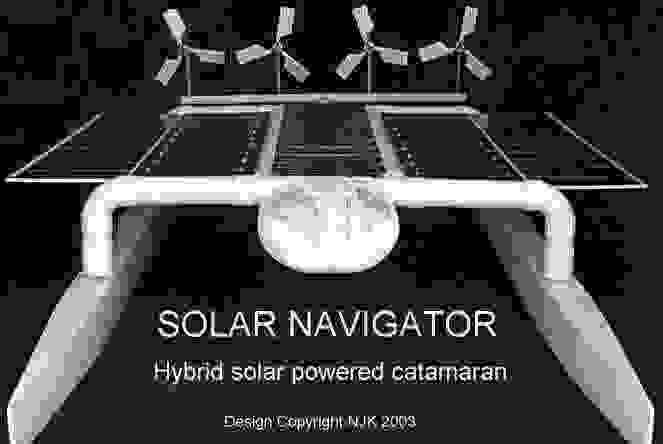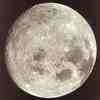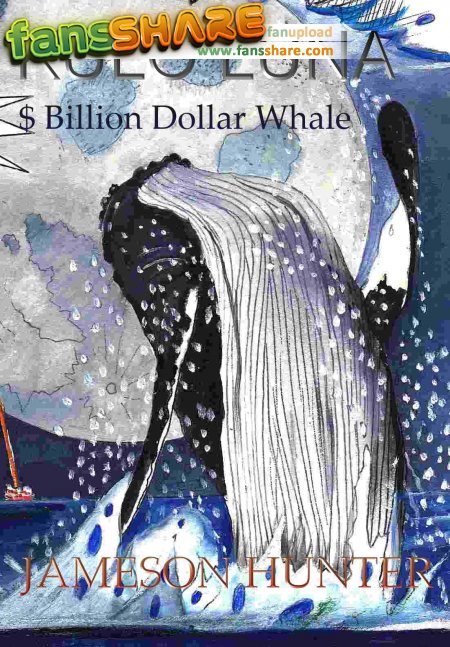|
Naturally
occurring energy is all around us. The problem is
in collecting it cost effectively. Plants do it with leaves on land
using chlorophyll to convert the Sun's rays into energy
to grow. Algae does it in the sea. There is
energy in the wind and in the waves, derived from the
Sun. Energy from the Sun reaches us across space
as radiation. Radiation is one of the most
efficient ways of transmitting energy - lucky for
us. The radiation heats the Earth's surface which
in turn creates wind and waves as the earth tries to
cool itself by convection currents. All this means
is that heated air or water tries to flow to cooler
parts of the Earth at the poles. Simple really,
but the land masses and water evaporation all go to
disturb any regular flow, and this is how weather
systems develop to be unpredictable.
The
Earth collects around 1 kilowatt of
energy per square meter from the Sun's
radiation. We can collect
this radiation (called insolation) using
photovoltaic cells, or solar
cells. If we connect a number of
these cells together we can harness
quite a bit of electricity, even
if solar cells at this time are only
10-15% efficient. As you can see
from the picture above Solar Navigator
has a large area of solar panels
arranged to face the Sun. The crew
must keep away from these panels to
prevent shading. Solarnavigator
also collects the Sun's energy from the
wind. As you can see in the
picture below, Solar Navigator also
generates electricity from the wind
which the crew can use to
cook food and power navigation
equipment. This is why the vessel
is known as a hybrid: there is more than
one natural energy source being
collected. Four wind turbines are
being tested on this 1/20 model of the
wave piercing catamaran.

A
boat like Solar Navigator has many uses. It
can cruise around the World without
stopping to refuel. Unlike other
sailing boats which also use free energy
from nature, this boat can be controlled
by computer directly quite simply using
an Autohelm and GPS, or driven by any
skipper
with powerboat experience - no more
tacking. Solar
Navigator is both quiet and
non-polluting. If you think such a
boat may be useful to you, or your
country for any reason
why not contact us and tell us why?
Our
solar system
Our solar system consists of the Sun and the
space surrounding it. The nine known planets,
their moons, comets and hundreds of thousands of
asteroids are in orbit around the Sun
The
origins of the solar system
Different theories accounting for the formation
of the solar system.
|

|
The
Sun
The diameter of the Sun is 1,400,000 km (840,000
miles) which is more than 100 times the diameter
of the Earth. Its mass is more than 300,000
times that of the Earth.
|
|

Sunspots
Sunspots are a phenomenon that has been known
about for at least several thousands of years.
|
|
Eclipses
An eclipse occurs when a body cuts off the light
from a light source so that we can no longer see
it shining. We generally talk of eclipses of the
Sun and Moon but other bodies inside and outside
the solar system exhibit eclipses and are very
important in astronomy.
|
|

|
Aurorae
The Aurora Borealis and Aurora Australis are
seen in the northern and southern hemispheres
respectively. Both are due to the interaction of
a stream of particles from the Sun with the
Earth's atmosphere.
|
|

|
The
Moon
The Moon is the closest astronomical object to
the Earth. With the Earth it forms what is
almost a double planet as no planet has a
satellite which is as large in comparison to the
size of the planet.
|
|
Once
in a blue moon!
The phrase 'once in a blue moon' is a familiar
one meaning once in a very long interval of
time. The phrase goes back to at least 1824 when
an explanation of its meaning appears as a
footnote attached to its use.
|
|
Mercury
Mercury is the closest planet to the Sun. With a
diameter of 4880 km, it is the second smallest
|
|

|
Venus
Venus is the second closest planet to the Sun.
It has no moon. With a diameter of 12104
kilometres it is the closest in size to the
Earth.
|
|

|
Mars
Mars is the fourth planet from the Sun and there
has been much speculation over the years about
the possibility of other life forms existing
there.
|
|

|
Jupiter
Jupiter is the largest planet in the Solar
System. It has a diameter 11 times that of the
Earth and a mass (more than 300 times that of
the Earth) which is greater than twice the sum
of all the other planets.
|
|

|
Saturn
Saturn is probably the best known, and most
beautiful planet in the Solar System.
|
|

|
Uranus
Uranus is the seventh planet of the Solar
System. It has a diameter of about 52,400 km; a
mass 14.6 times that of the Earth and orbits the
Sun every 84 years.
|
|

|
Neptune
Neptune is the eighth planet from the Sun. It
orbits the Sun every 165 years at a mean
distance of 30.1 times that of the Earth
(Astronomical Units).
|
|

|
Pluto
Pluto is, on average, the most distant planet
from the Sun.
|
|
The
furthest object in the solar system
The object which can claim to hold this title is
probably one of the comets which passed close to
the Sun many years ago and has returned to the
furthest limits of the solar system never to
return again.
|
|
Orbits
Until Isaac Newton formulated his Laws of Motion
it was generally thought that to keep a body in
motion it was necessary to use a force to push
or pull it
|
|
Tides
Tides are created by the gravitational
attraction of one massive body on another. We
commonly think of the tides as being a
phenomenon that we see in the sea. There are
other instances of the effects of tidal forces
such as the drastic effect that a Black Hole has
on matter in its close vicinity.
|
Solar
System on Youtube

A
heartwarming action adventure: Pirate
whalers
V Conservationists, introducing
John Storm and his
solar powered robot ship as
they fight to save a wounded whale from the sushi bars. For
release as an e-book from 2014 with hopes for a film in
2015/2016 TBA
|










